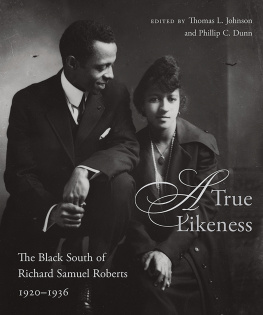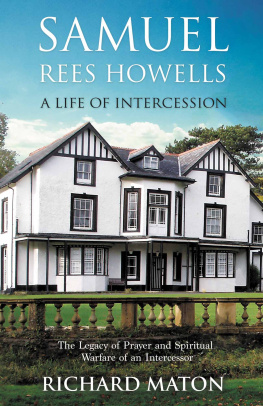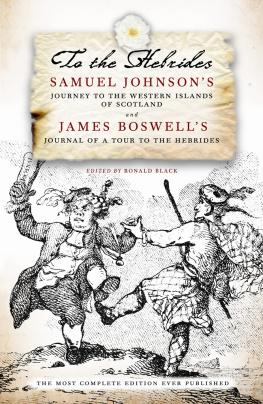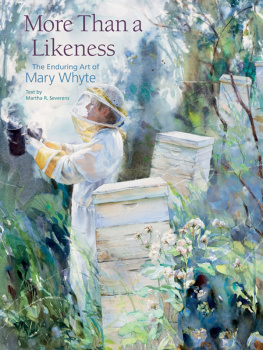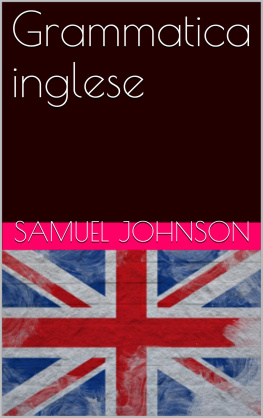Thomas L. Johnson (editor) - A True Likeness: The Black South of Richard Samuel Roberts, 1920-1936
Here you can read online Thomas L. Johnson (editor) - A True Likeness: The Black South of Richard Samuel Roberts, 1920-1936 full text of the book (entire story) in english for free. Download pdf and epub, get meaning, cover and reviews about this ebook. year: 2019, publisher: University of South Carolina Press, genre: Non-fiction. Description of the work, (preface) as well as reviews are available. Best literature library LitArk.com created for fans of good reading and offers a wide selection of genres:
Romance novel
Science fiction
Adventure
Detective
Science
History
Home and family
Prose
Art
Politics
Computer
Non-fiction
Religion
Business
Children
Humor
Choose a favorite category and find really read worthwhile books. Enjoy immersion in the world of imagination, feel the emotions of the characters or learn something new for yourself, make an fascinating discovery.
- Book:A True Likeness: The Black South of Richard Samuel Roberts, 1920-1936
- Author:
- Publisher:University of South Carolina Press
- Genre:
- Year:2019
- Rating:4 / 5
- Favourites:Add to favourites
- Your mark:
- 80
- 1
- 2
- 3
- 4
- 5
A True Likeness: The Black South of Richard Samuel Roberts, 1920-1936: summary, description and annotation
We offer to read an annotation, description, summary or preface (depends on what the author of the book "A True Likeness: The Black South of Richard Samuel Roberts, 1920-1936" wrote himself). If you haven't found the necessary information about the book — write in the comments, we will try to find it.
A True Likeness: The Black South of Richard Samuel Roberts, 1920-1936 — read online for free the complete book (whole text) full work
Below is the text of the book, divided by pages. System saving the place of the last page read, allows you to conveniently read the book "A True Likeness: The Black South of Richard Samuel Roberts, 1920-1936" online for free, without having to search again every time where you left off. Put a bookmark, and you can go to the page where you finished reading at any time.
Font size:
Interval:
Bookmark:

A True Likeness
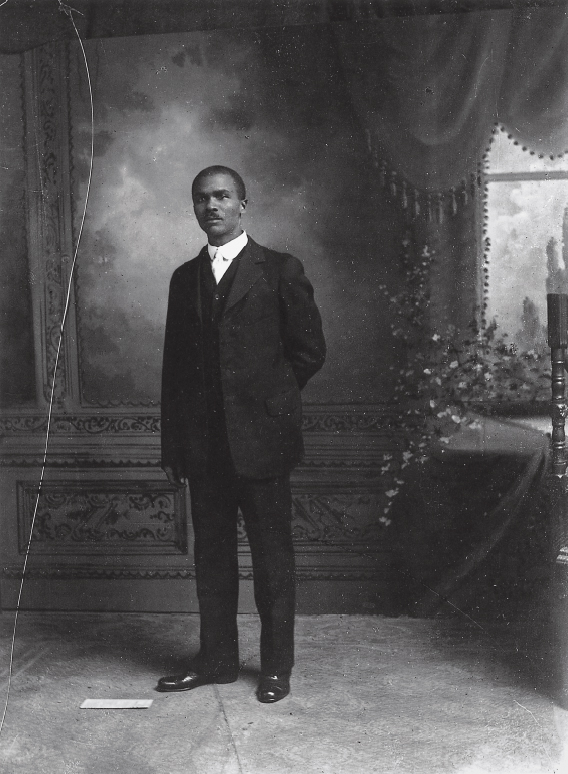
A True Likeness
The Black South of
Richard Samuel Roberts
19201936
Edited by
Thomas L. Johnson and Phillip C. Dunn

For Our Families
Roberts
Johnson
Dunn
Cloth edition published by Bruccoli, Clark and Algonquin Books, 1986
This edition published in Columbia, South Carolina, by the University of South Carolina Press, 2019
Photographs 1986, 1994 Estate of Richard Samuel Roberts
Text 1986, 1994 Thomas L. Johnson and Philip C. Dunn
New material 2019 University of South Carolina
www.sc.edu/uscpress
28 27 26 25 24 23 22 21 20 19
10 9 8 7 6 5 4 3 2 1
Library of Congress Cataloging-in-Publication Data for the 1986 cloth edition can be found at http://catalog.loc.gov/.
Frontispiece: Richard S. Roberts (18801936), Fernandina, Florida, before 1920.
This self-portrait was made in Robertss Florida studio which he called The Gem.
ISBN 978-1-64336-016-4 (paperback)
ISBN 978-1-64336-017-1 (ebook)
Front cover photograph: unidentified couple, 1920s
Contents
Elaine Nichols
Thomas L. Johnson
Foreword
In the 1986 introduction to A True Likeness: The Black South of Richard Samuel Roberts, 19201936, Thomas Johnson wrote for himself and his coeditor, Phillip Dunn, a statement that precisely expressed Richard Robertss philosophy and creative vision for his work as a photographer. It was based on Robertss statement in a promotional leaflet: A true likeness of oneself was just as necessary as every other necessity in life. To have ones photograph taken was a duty that one owed relatives and friends. Such an approach to taking pictures of others elevates the meaning of photographs and makes the provision of them an essential and obligatory function in life.
I first met Tom Johnson sometime between 1987 and 1989, after the publication of the book in 1986. He was the field archivist at the South Caroliniana Library at the University of South Carolina, and I was a guest curator for the South Carolina State Museum, researching African American funeral and mourning customs for an upcoming exhibition and catalogue. I was immediately impressed by his resourcefulness and extensive knowledge of South Carolinas African American history.
Tom was also a poet and an active member of the board of governors of the South Carolina Academy of Authors. In 1993 the academy inducted Kelly Miller Jr. (18631939), one of its posthumous honorees, into the organization. Miller, a native of Fairfield County, South Carolina, was a nationally recognized mathematician, philosopher, sociologist, writer, newspaper editor, and educator. In the early twentieth century, he was a leading figure in the intellectual discussion on race in America. Tom asked me to present the formal biographical statement about Miller at the induction ceremony in Charleston.
Tom later introduced me to a number of influential persons with South Carolina connections, including members of the Roberts family and Nina Root. Nina was the director emeritus of the Research Library at New Yorks American Museum of Natural History. She was also Toms coeditor for another photographic book about African Americans, Camera Mans Journey: Julian Dimocks South. Subsequently, that introduction led to a wonderful sisterly bond that we maintained until her death in 2017.
While the Roberts photographs were taken more than a decade after the Dimock images (which were produced in 1904 and 1905) and mostly in Columbia and in rural communities across the state, both photographers tried to present African Americans in the best possible and truest lightas beautiful, dignified people whose images were worthy of being preserved in the photographic records. Similarly, Tom Johnson has consistently demonstrated a passion for researching, chronicling, and preserving the African American experience in South Carolina. In addition, he has approached this work as a discoverer who knows that there is a wealth of untapped information waiting to be found and shared with the world.
I continue to be moved by the number and quality of images of babies and children who are part of Robertss narrative of black life in South Carolina. Two images remain with me. The first is that of a beautiful, smiling baby seated in and filling up a washbasin. It is such a captivating and cheerful image that if you have ever encountered a happy or contented baby, you will recognize the face of this child as the representative model. The second image, Portrait of an unidentified deceased child, probably 1920s, had a profound effect on me. When I first saw this image, I did not immediately recognize the child as deceased. I thought that she was asleep on a lace blanket. Her soft curls, rounded baby-cheeks, and delicate nose and lips gave no hint that she had transitioned from this world. I wanted to know her story: Who were her parents? Did she have any brothers or sisters? What were the circumstances of her passing? What would her life have been like had she lived? The questions were endless.
Winner of the Southern Regional Councils Lillian Smith Book Award in 1987, A True Likeness is, in many ways, a book of memories. Even the acknowledgments section preserves some important South Carolina remembrances as many, if not most, of the persons listed as contributing to the photo identifications in the book have passed away.
The photographs of Richard Samuel Roberts evoke a sense that we know these people, as well as their circumstances and neighborhoods, even if they are from a bygone era. Here we find the faces of relatives, friends, children, community leaders, faith, recreation, and even death. In short, the book captures not only the likenesses of individuals but also the authentic ethos of the community they inhabited.
Elaine Nichols
Supervisory Curator, Culture
Smithsonian National Museum of
African American History and Culture
Richard Samuel Roberts: An Introduction
by Thomas L. Johnson
During the 1920s and 1930s in Columbia, South Carolina, a black man named Richard Samuel Roberts was employed weekdays from four A.M. to noon as a custodian at the U.S. Post Office. When his workday there was done he went a few blocks south to 1119 Washington Street, in the heart of the segregated citys black commercial district, where on the second floor he maintained a photography studio. His clientele was largely the black population of the city. He also often took his equipment to residences, schools, and funeral homes in and around the city and at times he went on picture-taking trips to other cities and towns in the state, as well as into the rural sections.
He had taught himself photography in Fernandina, Florida, while working with his father as a stevedore and later as a fireman-laborer at the post office there. In Fernandina he eventually established and operated The Gem Studio. His wife, Wilhelmina Pearl Selena Williams, was a native of Columbia, and in 1920, after her health had begun to suffer from the humid Florida climate, the Robertses moved to Columbia. They bought a house, and by 1922 Roberts had rented the studio on Washington Street.
He operated his business for close to fifteen years. After his death in 1936 at least a portion of the negatives that Roberts had accumulated over the yearssome three thousand glass plates (out of a possible ten thousand pictures he may have made during the Columbia years)were stored in the crawl space beneath the family home at 1717 Wayne Street.
Next pageFont size:
Interval:
Bookmark:
Similar books «A True Likeness: The Black South of Richard Samuel Roberts, 1920-1936»
Look at similar books to A True Likeness: The Black South of Richard Samuel Roberts, 1920-1936. We have selected literature similar in name and meaning in the hope of providing readers with more options to find new, interesting, not yet read works.
Discussion, reviews of the book A True Likeness: The Black South of Richard Samuel Roberts, 1920-1936 and just readers' own opinions. Leave your comments, write what you think about the work, its meaning or the main characters. Specify what exactly you liked and what you didn't like, and why you think so.

